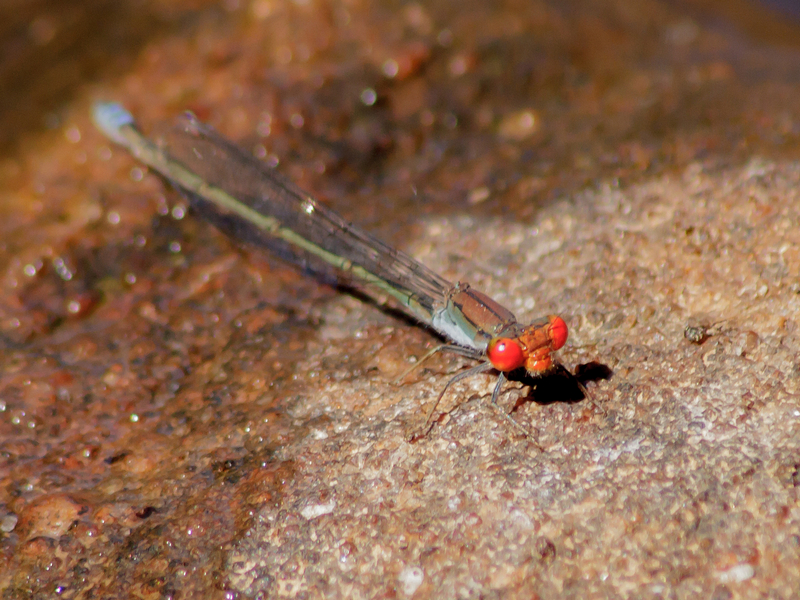Cover photo by John Wilkinson.
Find the Acacia Sprite in the FBIS database (Freshwater Biodiversity Information System) here.
Family Coenagrionidae
Identification
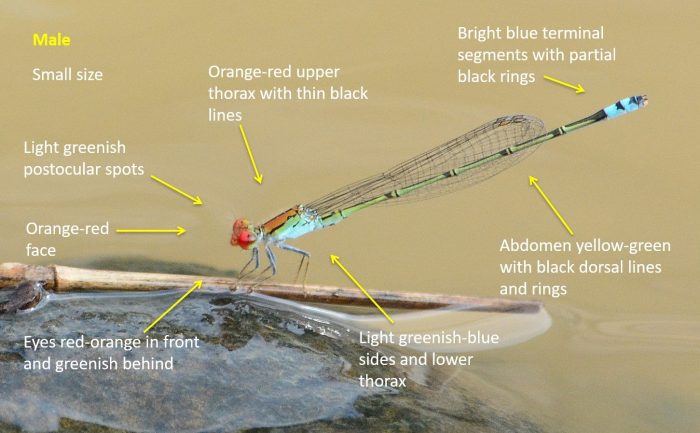
Mkuze River, KwaZulu-Natal
Photo by Ryan Tippett
Small size
Length up to 38mm; Wingspan attains 48mm.
The Acacia Sprite is one of a handful of ‘Reddish’ sprites found in the region. As with most other sprites, the colouration can be variable, and they tend to darken with age.
Males most resemble those of the Vaal Sprite (Pseudagrion vaalense) and especially younger males of the Cherry-eye Sprite (Pseudagrion sublacteum).
It is similar to Pseudagrion vaalense in that both species have greenish postocular spots, orange-red faces and eyes, and pale blue-green lower thorax sides. In Pseudagrion acaciae the thorax sides tend to be more green than blue and the pruinose blue markings on the end of the abdomen show distinct, incomplete black rings. There is also minimal overlap in the distribution of the two species.
Distribution overlaps widely with that of Pseudagrion sublacteum. In comparison, Pseudagrion sublacteum shows a purplish upper thorax and postocular spots, as well as bluer lower thorax sides and a bright cherry-red face and eyes.
Females are easily confused with those of other Pseudagrion species and are best identified by their association with the males.
Click here for more details on identification.
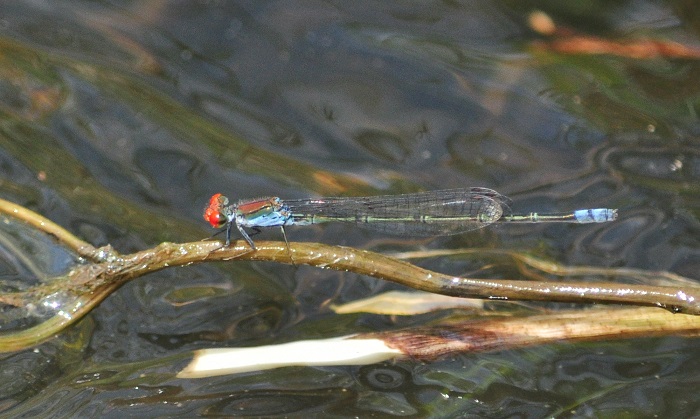
Ndumo Game Reserve, KwaZulu-Natal
Photo by Ryan Tippett
Habitat
The Acacia Sprite frequents flowing rivers in hot, low-altitude savanna areas. It prefers sites with shallow, rocky sections and with sand and varied riverside vegetation, especially grass and woodlands. The Acacia Sprite is most numerous along larger rivers.
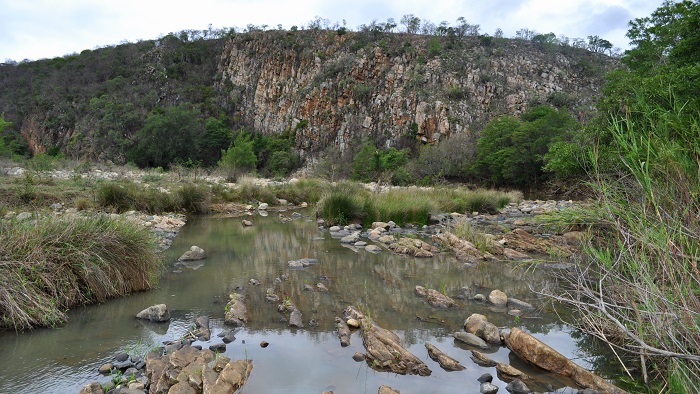
Photo by Ryan Tippett
Behaviour
Males sit close to the water on a rock, sandbar or suitable reed or grass stem. The flight of the Acacia Sprite is fast and low over the water. They often return to the same perch after each foray to catch food or to chase off a rival. Females are seldom encountered.
The Acacia Sprite has been recorded throughout the year at some sites. It is most active from September to April (see Phenology below).

Mkuze River, KwaZulu-Natal
Photo by Ryan Tippett
Status and Conservation
The Acacia Sprite is fairly common but localised. It is listed as of Least Concern in the IUCN Red List of Threatened Species. As a riverine species, it does not make much use of man-made habitats. The Acacia Sprite is restricted to undamaged savanna rivers.
Distribution
The Acacia Sprite ranges from East Africa down to South Africa. The South African distribution is centred upon the larger east-flowing rivers from central KwaZulu-Natal to Limpopo.
Below is a map showing the distribution of records for Acacia Sprite in the OdonataMAP database as at February 2020.

Below is a map showing the distribution of records for Acacia Sprite in the OdonataMAP database as of December 2024.

The next map below is an imputed map, produced by an interpolation algorithm, which attempts to generate a full distribution map from the partial information in the map above. This map will be improved by the submission of records to the OdonataMAP section of the Virtual Museum.
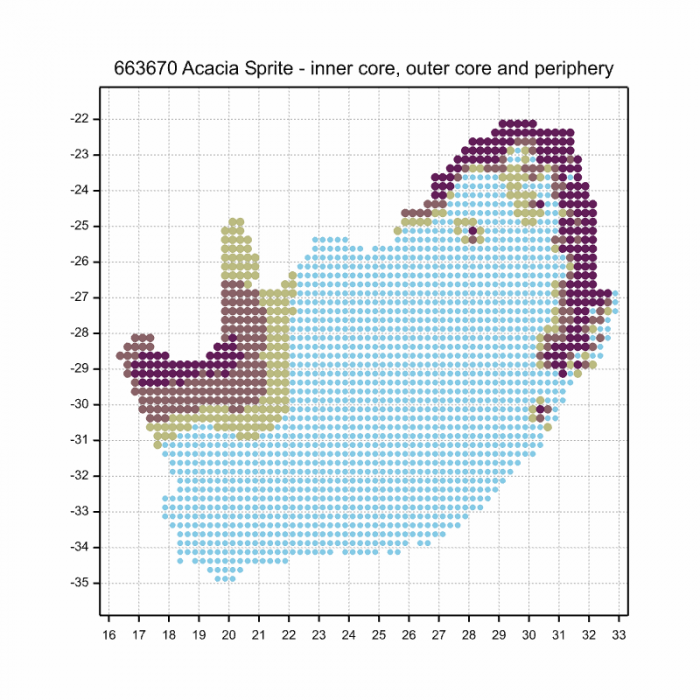
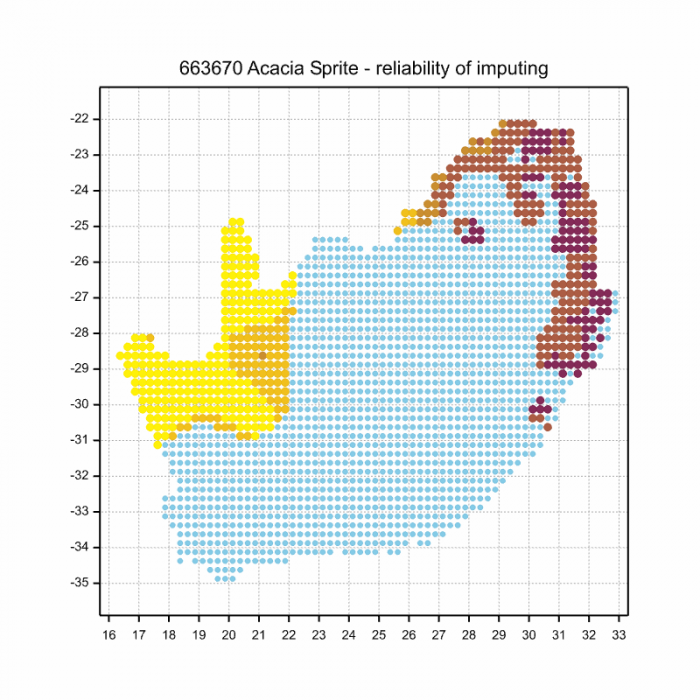
Ultimately, we will produce a series of maps for all the odonata species in the region. The current algorithm is a new algorithm. The objective is mainly to produce “smoothed” maps that could go into a field guide for odonata. This basic version of the algorithm (as mapped above) does not make use of “explanatory variables” (e.g. altitude, terrain roughness, presence of freshwater — we will be producing maps that take these variables into account soon). Currently, it only makes use of the OdonataMAP records for the species being mapped, as well as all the other records of all other species. The basic maps are “optimistic” and will generally show ranges to be larger than what they probably are.
These maps use the data in the OdonataMAP section of the Virtual Museum, and also the database assembled by the previous JRS funded project, which was led by Professor Michael Samways and Dr KD Dijkstra.
Phenology

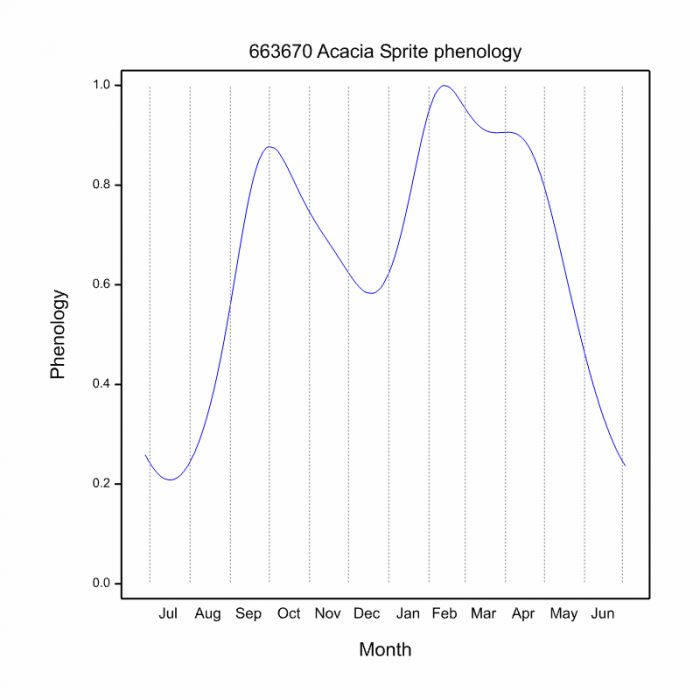
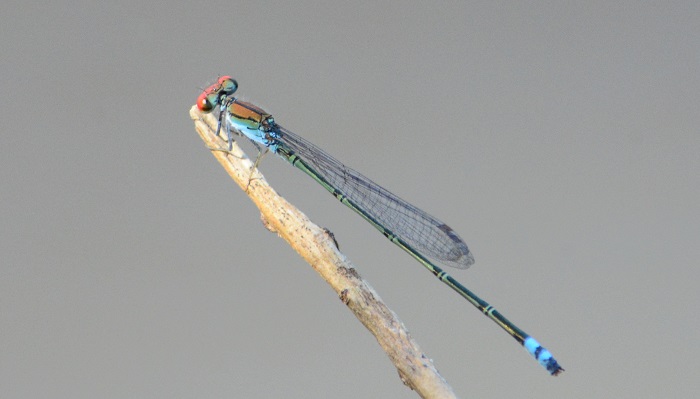
Ndumo Game Reserve, KwaZulu-Natal
Photo by Ryan Tippett
Further Resources
The use of photographs by John Wilkinson is acknowledged. Other photographs by Ryan Tippett.
Acacia Sprite Pseudagrion acaciae Förster, 1906
Other common names: Green-naped Sprite (Alt. English); Akasiagesie (Afrikaans).
Recommended citation format: Loftie-Eaton M; Navarro R; Tippett RM; Underhill L. 2025. Acacia Sprite Pseudagrion acaciae. Biodiversity and Development Institute. Available online at https://thebdi.org/2020/05/20/acacia-sprite-pseudagrion-acaciae/
References: Tarboton, M; Tarboton, W. (2019). A Guide to the Dragonflies & Damselflies of South Africa. Struik Nature.
Samways, MJ. (2008). Dragonflies and Damselflies of South Africa. Pensoft
Samways, MJ. (2016). Manual of Freshwater Assessment for South Africa: Dragonfly Biotic Index. Suricata 2. South African National Biodiversity Institute, Pretoria
Martens, A; Suhling, F. (2007). Dragonflies and Damselflies of Namibia. Gamsberg Macmillan.

